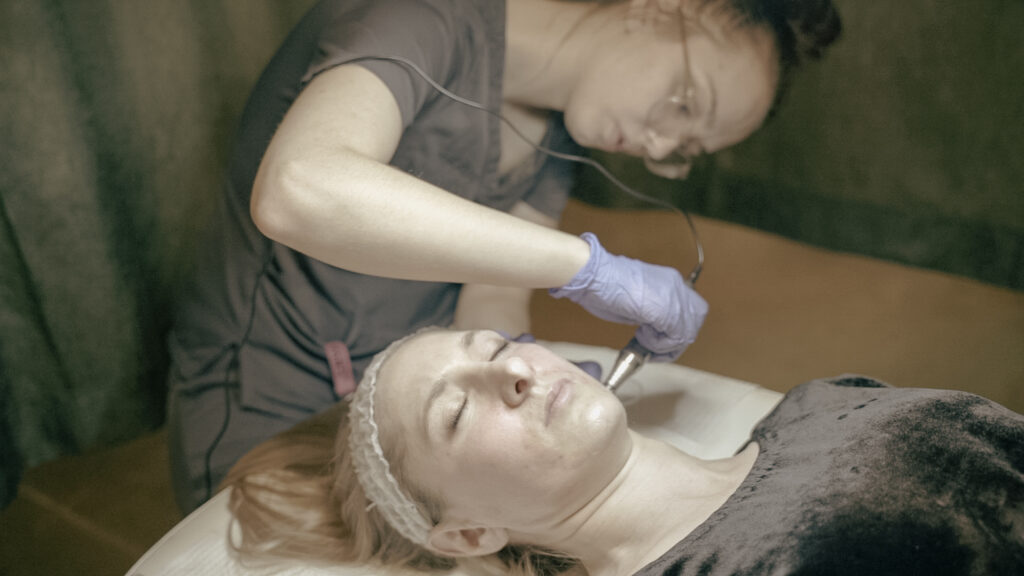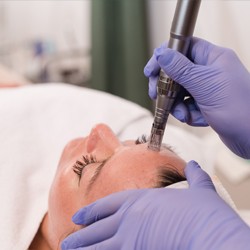Discover the Benefits of Microneedling: Procedure, Risks, and Results
Microneedling, also known as collagen induction therapy, is a popular cosmetic procedure used to address a variety of skin concerns, including acne scarring, wrinkles, stretch marks, and uneven skin tone. It involves the use of a microneedling device, which consists of tiny needles that penetrate the skin to stimulate collagen and elastin production.
Understanding Microneedling
How Does Microneedling Work?
The microneedling procedure works by creating controlled micro-injuries to the skin, triggering the skin’s natural healing process and promoting the production of new collagen. This process helps improve the appearance of fine lines, wrinkles, and overall skin texture.
Collagen Induction Therapy
Microneedling is commonly referred to as collagen induction therapy because of its ability to stimulate the production of collagen, a key protein responsible for maintaining the skin’s firmness and elasticity. This leads to smoother, more youthful-looking skin.
Benefits of Microneedling
Microneedling offers a range of benefits, including the reduction of acne scarring, improved skin texture, diminished fine lines and wrinkles, and minimized pore size. Additionally, microneedling can be used in combination with topical serums or growth factors to enhance the overall results of the treatment.
Unlocking the Benefits of Microneedling: Procedure, Risks, and Results

Microneedling, also known as collagen induction therapy, is a popular cosmetic procedure used to address a variety of skin concerns, including acne scarring, wrinkles, stretch marks, and uneven skin tone. It involves the use of a microneedling device, which consists of tiny needles that penetrate the skin to stimulate collagen and elastin production.
Understanding Microneedling
How Does Microneedling Work?
The microneedling procedure works by creating controlled micro-injuries to the skin, triggering the skin’s natural healing process and promoting the production of new collagen. This process helps improve the appearance of fine lines, wrinkles, and overall skin texture.
Collagen Induction Therapy
Microneedling is commonly referred to as collagen induction therapy because of its ability to stimulate the production of collagen, a key protein responsible for maintaining the skin’s firmness and elasticity. This leads to smoother, more youthful-looking skin.
Benefits of Microneedling
Microneedling offers a range of benefits, including the reduction of acne scarring, improved skin texture, diminished fine lines and wrinkles, and minimized pore size. Additionally, microneedling can be used in combination with topical serums or growth factors to enhance the overall results of the treatment.
The Microneedling Procedure

Candidate for Microneedling
Before undergoing microneedling, individuals should consult with a dermatologist to determine if they are a suitable candidate for the procedure. People with darker skin tones may require special considerations due to the potential risk of pigmentation changes. Additionally, those with active skin infections or a history of keloid scarring may not be suitable candidates for microneedling.
At-Home Microneedling
While professional microneedling sessions are typically performed by a trained skincare professional, there are at-home microneedling devices available for personal use. However, it is essential for individuals to thoroughly research and understand the risks and benefits associated with at-home microneedling before attempting the procedure. Seeking advice from a dermatologist is recommended to ensure safe and effective at-home microneedling.
Sessions of Microneedling
The number of microneedling sessions required may vary depending on the individual’s skin concerns and the desired results. Typically, a series of sessions spaced several weeks apart are recommended to achieve optimal outcomes. However, the dermatologist or skincare professional will assess the individual’s skin type, the severity of the skin concern, and the response to the initial sessions to determine the appropriate treatment plan.
Risks and Results
When considering microneedling, it’s important to be aware of the potential risks associated with the procedure. While microneedling is generally considered safe, some individuals may experience side effects such as redness, swelling, and mild discomfort during the recovery period. In rare cases, there is a risk of infection or scarring, especially if proper aftercare instructions are not followed. Dermatologists recommend avoiding sun exposure and using gentle skincare products to minimize the likelihood of adverse reactions.
Potential Risks of Microneedling
It’s essential to discuss any pre-existing skin conditions or concerns with your dermatologist before undergoing microneedling. Individuals with a history of keloid scarring may not be suitable candidates for the procedure, and those with darker skin tones should be cautious due to the risk of pigmentation changes. Additionally, at-home microneedling carries its own set of risks, and individuals should seek professional guidance to ensure safe and effective treatment.
Results of Microneedling
The results of microneedling can vary depending on individual skin concerns and treatment plans. Many individuals experience improved skin texture, reduced appearance of fine lines and wrinkles, and minimized pore size following a series of microneedling sessions. Furthermore, the procedure can be combined with topical serums or growth factors to enhance the overall results. Collagen induction therapy through microneedling promotes the skin’s natural healing process, leading to a more youthful and rejuvenated appearance.
FAQ’s
Q: What is microneedling and how does it work?
A: Microneedling is a minimally invasive cosmetic procedure used to treat a variety of skin issues. During the procedure, a microneedling device creates tiny holes in the skin, which stimulates collagen production and can improve the appearance of aging skin.
Q: What are the benefits of microneedling?
A: Microneedling can reduce the appearance of acne scars, fine lines, and wrinkles. It can also improve the overall texture and tone of the skin.
Q: Who is a good candidate for microneedling?
A: People with various skin concerns such as acne scars, aging skin, or uneven skin tone may benefit from microneedling. However, it’s important to consult a dermatologist or a plastic surgeon to determine if microneedling is the right treatment for you.
Q: What can I expect before and after microneedling?
A: Before microneedling, you may receive a topical numbing cream to minimize discomfort during the procedure. After microneedling, your skin may be red and slightly swollen for a few days, but these side effects typically subside relatively quickly.
Q: Are there any risks associated with microneedling?
A: While microneedling is considered a minimally invasive procedure, there are some potential risks, including skin irritation, infection, or pigmentation changes. These risks can be minimized by choosing a qualified and experienced practitioner.
Q: How soon can I see results after microneedling?
A: Some people notice an improvement in their skin’s appearance after just one session of microneedling. However, a series of treatments may be recommended to achieve optimal results.
Q: Can microneedling be combined with other treatments?
A: Yes, microneedling can be combined with other treatments such as platelet-rich plasma (PRP) therapy to enhance its effects. Your dermatologist or plastic surgeon can advise you on the best treatment plan for your specific skin concerns.
Q: Does microneedling work better for certain skin issues?
A: Microneedling may work better for certain skin issues such as acne scars, fine lines, and uneven skin texture. However, its effectiveness can vary depending on individual skin characteristics.
Q: Is microneedling suitable for all skin types?
A: Microneedling is typically considered safe for all skin types, but it’s important to discuss any skin sensitivities or conditions with your practitioner beforehand to ensure the procedure is appropriate for you.
Q: How is microneedling performed?
A: During a microneedling session, a dermatologist or trained professional will use a microneedling device to create controlled injuries to the skin. These micro-injuries stimulate the body’s natural wound healing process, leading to improved skin texture and appearance over time.

